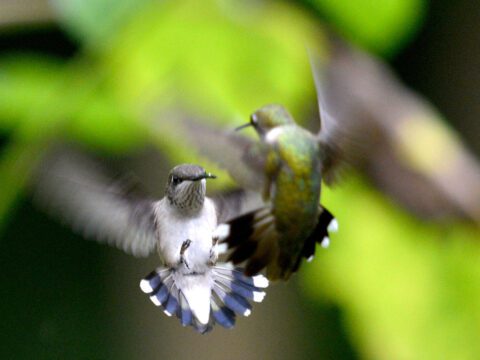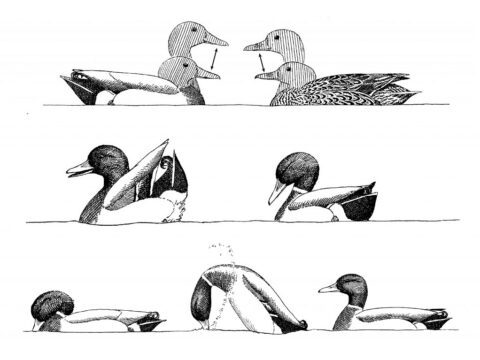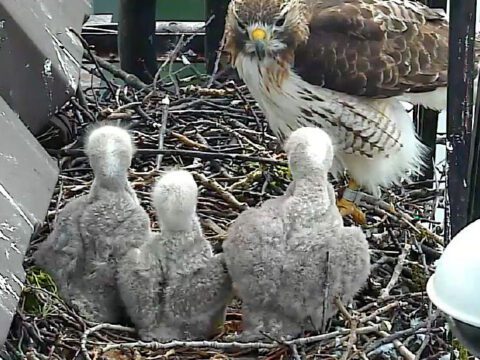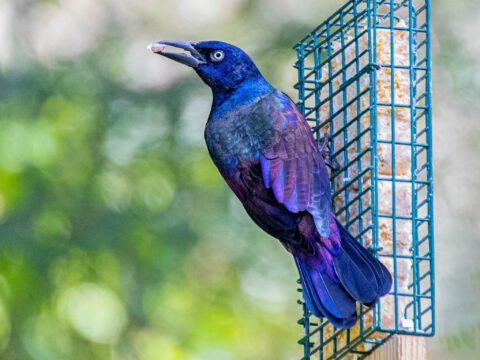Top Ten Ways to Connect with Birds
By Laura Erickson
October 15, 2010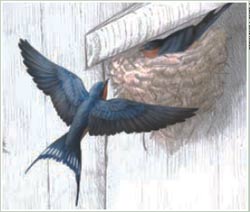
1. Go on a bird walk. Local Audubon chapters, birding clubs, and state, regional, and national organizations offer ways for people to have fun together, share information, and work toward common goals.
2. Try out citizen science. When can I expect the first hummingbird in spring? Are redpoll numbers up this year? Is West Nile virus hurting crows? On their own, scientists can’t collect enough data to answer these questions. But as citizen scientists, thousands of us can contribute to programs such as eBird, Project FeederWatch, NestWatch, and others, and help find answers. Learn more at www.birds.cornell.edu/citsci.
3. Visit a banding station. There’s nothing like the thrill of seeing a wild bird up close. Banding stations operate across the country. They are sometimes open to the public or to classes and offer a great chance to share the wonder of a close encounter with birds.
4. Detour to a birding hotspot. Connect with a region’s specialty birds and meet the birders who watch them. Cape May, the Rio Grande Valley, Arizona’s Chiricahua mountains, Sanibel Island, Point Pelee. These are just a few parts of the map you should make sure to visit someday.
5. Explore the Internet. Think there are no birds on the Web? Check out the millions of photos, sounds, videos, and bird watchers on Facebook, Twitter (and its birdy cousin, Chirptracker), Flickr, and even YouTube.
6. Share your photos. With ever-more-powerful and affordable digital cameras (and phones) more and more birders are taking excellent photographs. And you no longer have to save them for houseguests or slideshows—people swap, admire, and discuss photos all day long on Internet sites like Pbase, Flickr, Twitter, and nature photography blogs.
7. Twitch. Birds amaze and confound us with their seemingly effortless flight—not least when a rarity shows up or a major irruption (crossbills, siskins, owls, etc.) descends on us. Suddenly connections are forged between local birders, “twitchers” who drive from far away, and even news reporters who get in on the excitement.
8. Compete. Birdathons such as the World Series of Birding, the Biggest Week, Big Sit, the Big Green Birding Year, and innumerable big day and big year attempts are friendly competitions that connect participants and supporters, raise awareness, and sharpen skills.
9. Visit a rehab center. Rehab centers (and outreach presentations at schools and birding festivals) offer an unrivaled chance to get up close to a magnificent wild animal. For many, interest in birds was sparked by a look into the eyes of a rehabilitated bird.
10. Enjoy migration. Twice a year the wider bird world comes rushing past our homes, upending the normal sights of summer or winter and investing each tree, shrub, pond, or mudflat with the promise of something unusual. Time your visit to a birding hotspot, such as Hawk Ridge, Minnesota, or the “River of Raptors” in Veracruz, Mexico, and the results can be unforgettable.
Originally published in the Autumn 2010 issue of BirdScope.

All About Birds
is a free resource
Available for everyone,
funded by donors like you
American Kestrel by Blair Dudeck / Macaulay Library

